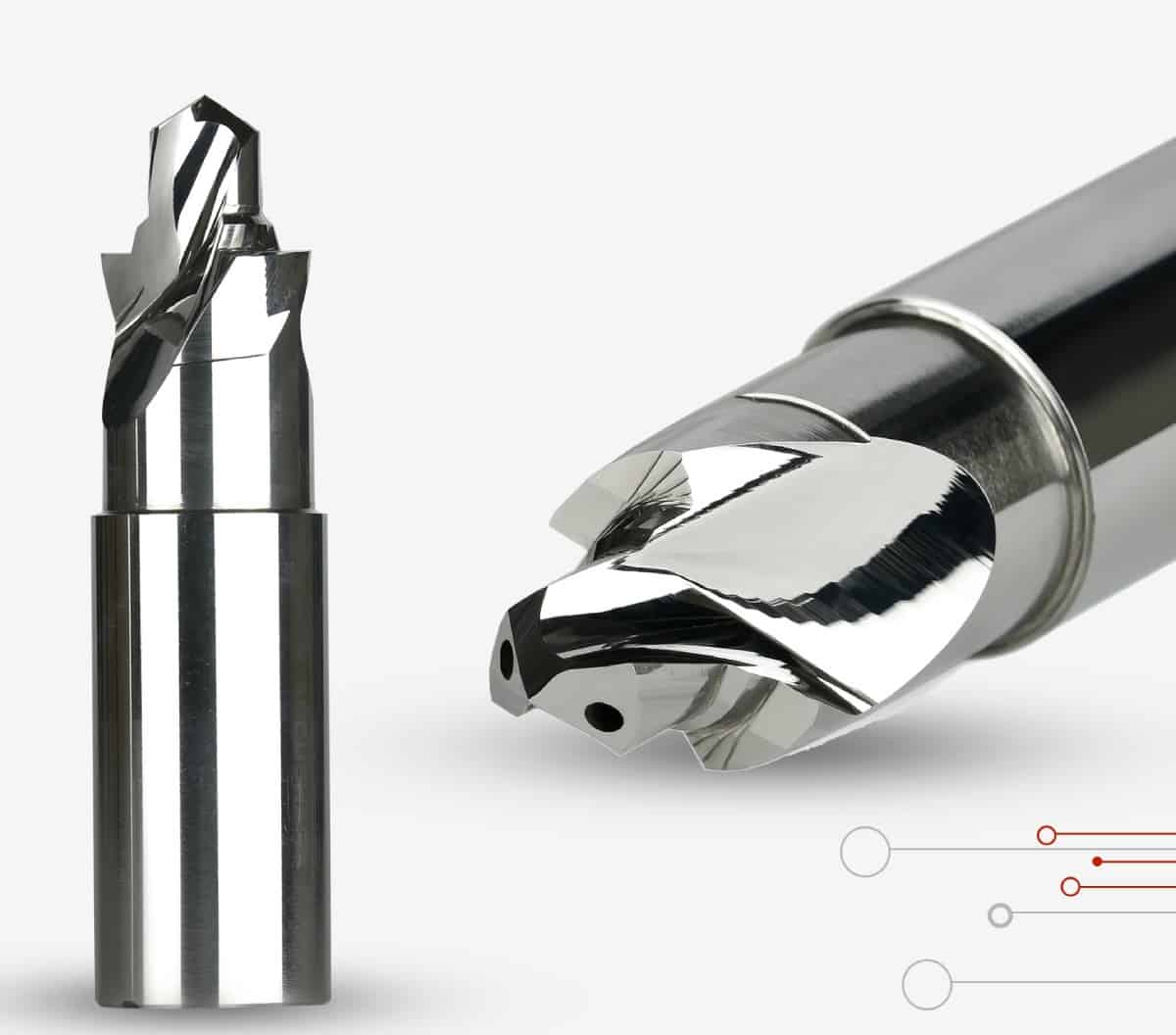Solid Carbide Ball Nose .
A Ball Nose Endmill is a type of tool that is used to mill various curved surfaces and arc grooves on a VMC OR HMC machine with a cutter that looks like a ball head.
The ball nose endmill has the best impact on cutting curved surfaces, however because of the short chip retaining groove at the tip, chip discharge is low.
Ball nose endmills also called full radius end mills or ball mills. Ball nose cutter is cutting tools with a nose radius equal to half the tool’s diameter. This results in a profile with a single radius (or ball) at the tool end and no straight edges (sharp corners). They’re utilised for anything from contouring and profiling to slotting and corner selecting in milling. Their principal use is in 3D semi-finishing and finishing processes for companies such as Die & Mould, where their shape allows them to manufacture part shapes more effectively.
- Ball nose endmill 2 flute
- Ball nose endmill 4 flute
- Corner Radius endmill.
Ball nose endmills have a radius at the bottom, resulting in a finer surface finish in your work piece and less labour for you because the piece will not need to be finished further.
The edges of this tool are centre cutting, and the end is ground with a full radius equal to half of the tool diameter. They can be used to mill big corner radiuses, full radius grooving, and contour or profile milling. Engraving can be done on the smaller diameters.
They’re used in applications including contour milling, shallow slotting, pocketing, and contouring. Because they are less prone to chipping and produce a beautiful rounded edge, ball nose mills are great for 3D contouring.
The Fundamentals of Manufacturing:
A diamond-impregnated grinding wheel is put on a specialised CNC grinding machine, much like any other solid carbide end mill. Ball nose end mills, like most end mills, will need more than one grinding wheel to finish the tool. As a result, numerous wheels will be fitted together in what is known as a wheel pack.
These packs are standardised with stock products based on the tool’s design and size. Our manufacturing engineers will use various wheel grits, diameters, and profile shapes based on design parameters. To limit the amount of change over time that occurs during shorter custom production runs, fewer wheel packs are utilised instead of more single wheel sets for custom tools.
Maintaining a precise radius from the tip of the nose back to the tool shank is the most difficult aspect in grinding a perfect ball. To accomplish this, a relief must be ground into the tool’s end that leads out to an intersection of the outside diameter, resulting in a perfect radius when it reaches the tangent point. Of course, the machine’s accuracy and movement are crucial for proper control.
In reality, selecting the most appropriate items based on the performance of processing products and the specifications of the CNC machine can considerably enhance production efficiency.
If you have recently purchased a VMC machine, you’re undoubtedly curious about the different sorts and styles of cutting you can accomplish with it. End mills, roughing end mills, slab mills, and ball cutters, sometimes known as ball nose milling cutters, are among the cutters available. All of the alternatives are useful for different purposes, and it’s a good idea to learn about them all while focusing on the ball cutter.
A ball nose milling cutter is similar to a slot drill in that it employs ball nose end mills and has hemispherical ends. As a result, they can be used to machine any 3D contoured forms, such as dies and moulds, into the machining centres.


Ball Nose endmill parameters:
- Cutter Diameter
The width of the slot you can make with your end mill is determined by the cutter diameter. It also has an impact on how much chip is removed during side milling operations. So, before purchasing and/or mounting a cutter for your cutting work, make sure to select an adequate cutter diameter end mill to ensure a final item that meets the requirements.
- Cutting depth and reach
The depth of cut required for your end mill is determined by the longest contact length necessary. To avoid overhang and ensure a rigid, precise cutting process, choose a length that is just long enough. Multiplying the cutter diameter by five is a simple trick. You might want to explore a necked reach solution if that figure is higher than the required cutting depth.
Applications:
Ball nose endmills can be adapted to a wide range of applications by incorporating various design characteristics. They can be used as roughing tools, with a design that includes a large core, neutral cutting angles, and a slow helix, along with the complete radius and HSM machining processes, to produce extraordinarily long life in the toughest materials.
Sharper designs with more chip pocket space and uneven helix designs can be used with more traditional tool paths to efficiently and predictably rough softer steels. It depends on the individual portion and the programmer’s desire, as it does with every tool. But make no mistake: the ball nose end mill is a formidable ally in the machining process.
Ball nose endmill used in various industries.
- Automobile Industry
- Die and Mould
- Aerospace Industries.
- Power generation
- Medical equipment industry
With this knowledge, you may want to contact us for assistance in selecting the best ball nose cutters for your needs.


